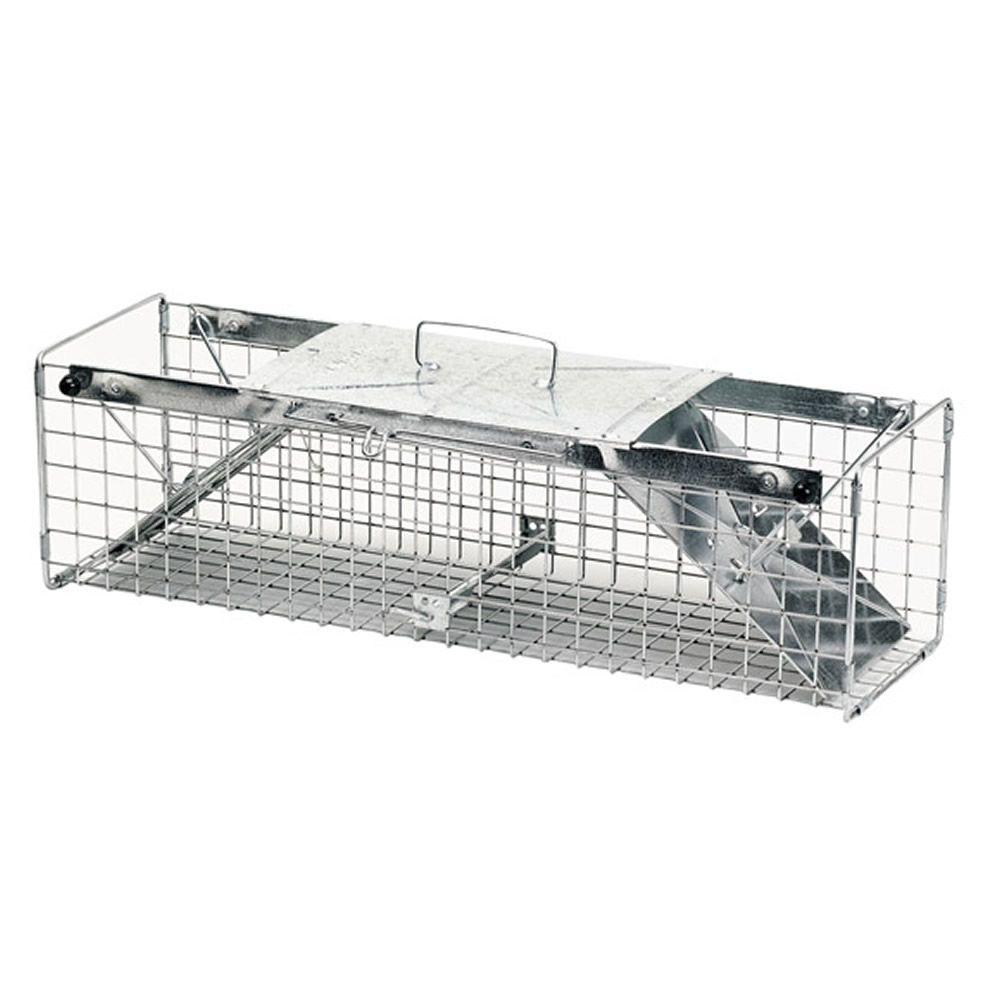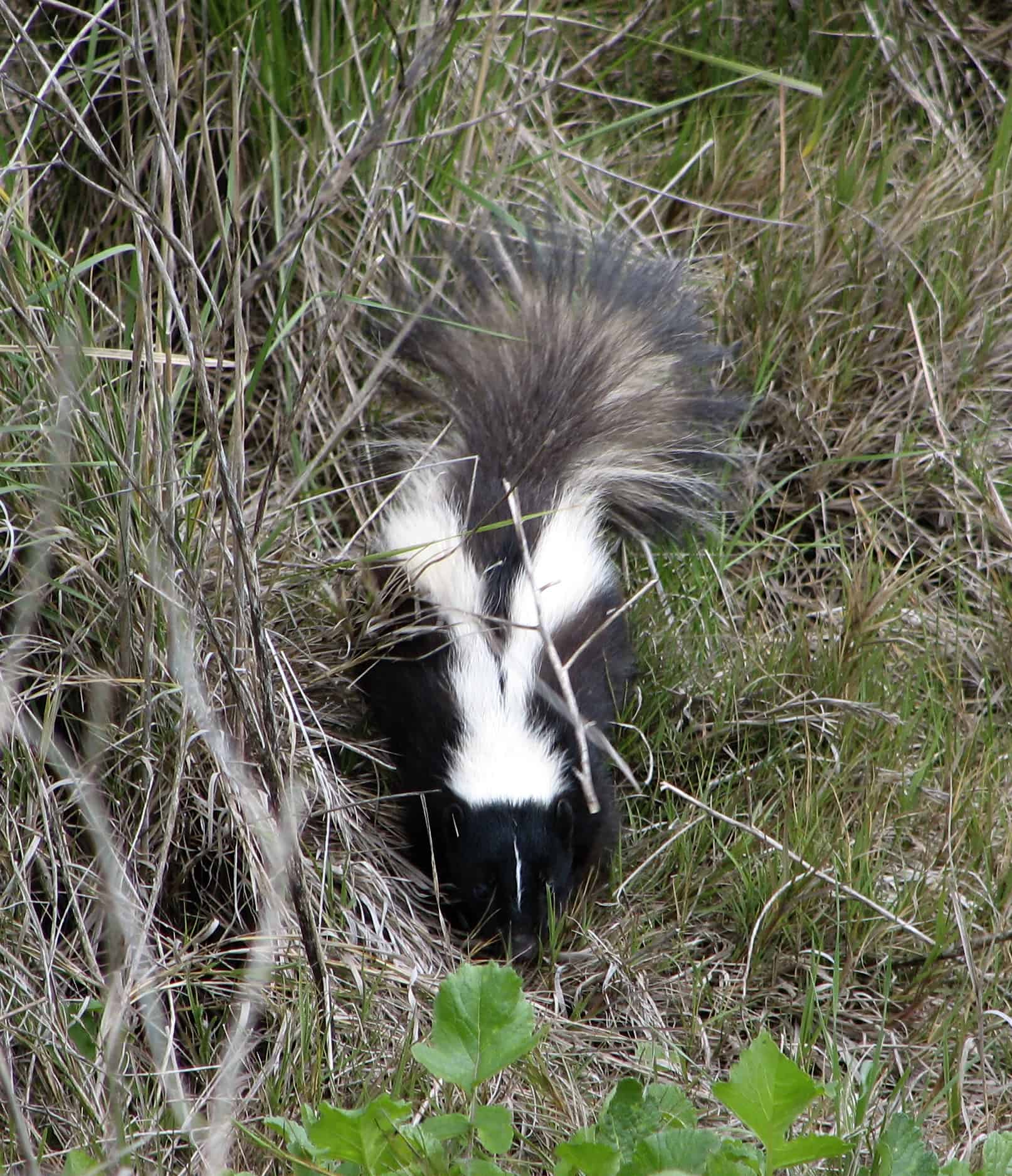Can I Trap a Skunk?
So you have a skunk or skunks coming to your yard and you are ready to catch them so you can move them away from your property. There are some considerations and the most important one would be is it legal or do you need a permit to trap a skunk? In many states there are different rules depending on whether you are in a rural or urban/suburban area. It is important to first check with your states department of natural resources or conservation to find out what your options are for removing a nuisance skunk.
The next consideration is whether to use a live trap or a trap that is lethal. There will also be rules to consider on where you live about whether or not this is allowed and what you are expected to do with a caught skunk. Most of the animals that people have the unfortunate luck to run across are actually low risk. There may be property damage to consider and interactions with pets, but the presence of an animal with rabies is likely a lower risk and it is difficult to know with certainty if the animal is out at an unusual time (during daylight hours for a nocturnal animal) because it is sick or because it is trying to find food or something drove it out of hiding, like a dog. Depending on the time of year that it is, a skunk may be foraging so it can feed or nurse its young. Even though skunk spray is without a doubt unpleasant, skunks have their place in the food chain and do eat other pests. So if you have the opportunity to relocate the animal rather than killing it please consider that as an option. Also if you use a live trap, especially in a suburban area, and your bait attracts a different animal than what you are trying to catch (like a cat) you can let it go without causing a lot or turmoil in the neighborhood.
Three Types of Live Traps for Skunks
So what type of live trap should you get? Traps generally cost between $30 and $100 depending on the size and style. If you have a number of animals to trap and relocate buying a trap will be less expensive than repeated visits from a service that removes the animals. Wire cage style live traps are popular for catching skunks, raccoons and possum. You set the trap by opening one or two  doors of the trap depending on the model an set a bait inside. When the skunk triggers the trap the door or doors will drop catching the skunk in the trap. With a wire cage style trap the animal can see anything that approaches the trap and they may be easily threatened. Without the option to flee you may see a skunk stamp its feet as a warning to you, and then of course the next option for the skunk is to spray. Some people who have used this type of trap have been successful in getting the trap covered before the skunk sprays. By approaching the trap with a tarp or blanket held out in front of the person to cover the trap when they get to it may prevent them from getting sprayed and keep the skunk a little more calm. The covered trap can then be moved to an appropriate place for the skunk to be released. The traps work well for most size skunks, but if you get a trap that is too small the skunk’s tail may get caught under the door once the trap is triggered and stopping the trap from closing completely. If the trap is not completely closed the skunk may be able to escape back through the partially open door. Versions of this trap with a single door, where the bait is placed as far back in the trap as possible will help avoid missed catches.
doors of the trap depending on the model an set a bait inside. When the skunk triggers the trap the door or doors will drop catching the skunk in the trap. With a wire cage style trap the animal can see anything that approaches the trap and they may be easily threatened. Without the option to flee you may see a skunk stamp its feet as a warning to you, and then of course the next option for the skunk is to spray. Some people who have used this type of trap have been successful in getting the trap covered before the skunk sprays. By approaching the trap with a tarp or blanket held out in front of the person to cover the trap when they get to it may prevent them from getting sprayed and keep the skunk a little more calm. The covered trap can then be moved to an appropriate place for the skunk to be released. The traps work well for most size skunks, but if you get a trap that is too small the skunk’s tail may get caught under the door once the trap is triggered and stopping the trap from closing completely. If the trap is not completely closed the skunk may be able to escape back through the partially open door. Versions of this trap with a single door, where the bait is placed as far back in the trap as possible will help avoid missed catches.
The next style of trap is similar to the wire cage live trap but is made of with solid walls. The setup and use are the same, but with a trap that has solid walls that the skunk cannot see through, you can approach the trap with less chance of scaring the skunk and if it does spray, the spray will be contained inside the trap. Solid trap walls also eliminate the chance that an animal can try to bite or nip at fingers near the trap while it is being transported. If a skunk does spray in a solid wall trap the trap can be cleaned with the same soap/peroxide/baking soda solution used for cleaning dogs.
The third style of live trap is a tube style trap that has a tube diameter that allows the skunk to enter the trap and trigger the trap door to fall, but the skunk cannot lift its tail to spray. The traps are also enclosed like the solid wall trap so it is  easier to approach the trap to collect it and transport it to the release area. Skunks are good at squeezing through small openings as the dig through yards or dash under a fence to escape when frightened. So if you have a striped skunk that you are trying to catch this type of trap will typically work well because striped skunks don’t get too large. Hog nosed skunks can grow to larger size and may not be able to fit in some of these traps that have a 6 inch diameter tube for the skunk to enter looking for the bait. Users of this style trap have been very happy with the fact that the skunk is really restricted from spraying, making the process of relocating easier.
easier to approach the trap to collect it and transport it to the release area. Skunks are good at squeezing through small openings as the dig through yards or dash under a fence to escape when frightened. So if you have a striped skunk that you are trying to catch this type of trap will typically work well because striped skunks don’t get too large. Hog nosed skunks can grow to larger size and may not be able to fit in some of these traps that have a 6 inch diameter tube for the skunk to enter looking for the bait. Users of this style trap have been very happy with the fact that the skunk is really restricted from spraying, making the process of relocating easier.
Baiting the Trap
With any of these traps you need to get the skunk to enter. Because skunks will eat a pretty wide variety of foods there are some different options on what you can use. Fish and catfood are good choices, and there are prepared baits that you can buy to put in the traps. Good old fashioned peanut butter is a solid performer and can be put on a small piece of bread to draw a skunk inside.
Check the Trap and Release as Quickly as Possible
Once you have a baited trap set out, it needs to be checked as soon as possible so that any animal you have caught can be quickly released. A trapped skunk will not have water and leaving it unattended in a trap could end up being lethal and starvation or heat are cruel ways for a skunk to die. So if a trap is set out in the evening it needs to be checked first thing in the morning. And be prepared to deal with your catch, if you have a skunk in the trap and are going to relocate it, this needs to be done right away to minimize the stress on the animal. Have a plan for where it will be released so you will know that you and the skunk will both be able to leave the release spot easily. It may take some time for a skunk to leave a trap, some skunks will spend half an hour looking out at an area before running off. Offering nearby cover for the skunk to be able to reach can help get it out of the trap and on its way faster.


